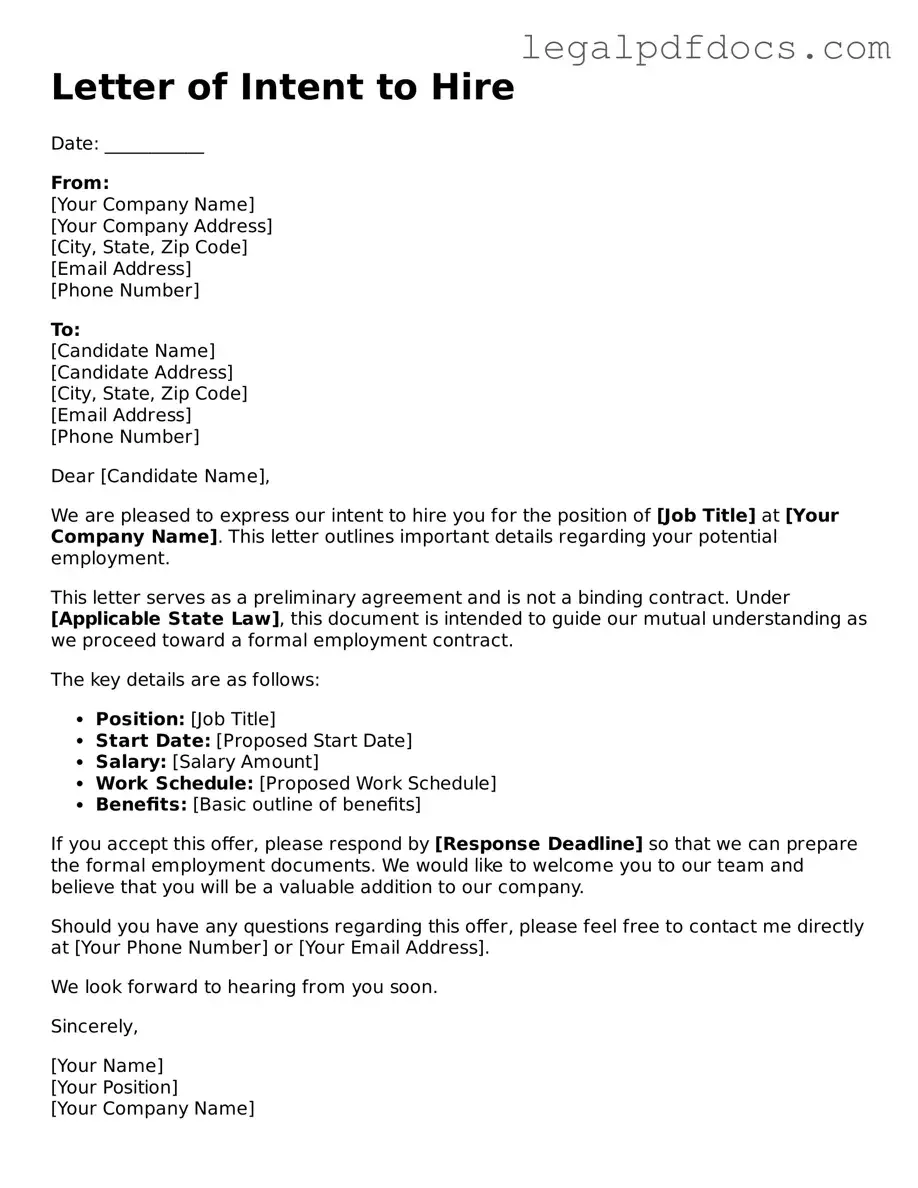Letter of Intent to Hire Template
A Letter of Intent to Hire is a preliminary document that outlines the intention of an employer to hire a candidate, detailing key terms of employment before the final contract is drafted. This form serves as a formal acknowledgment of the hiring process and can help clarify expectations for both parties. To ensure a smooth transition into your new role, consider filling out the form by clicking the button below.
Open Letter of Intent to Hire Editor Here
